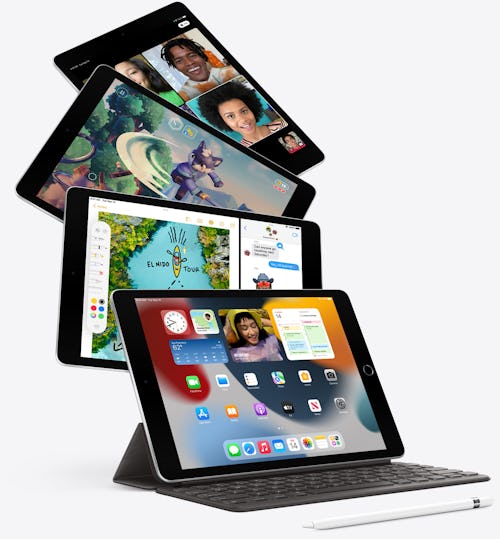
Apple’s last iPad with the Lightning port, the $329 entry-level 10.2-inch iPad 9, might finally switch to USB-C, according to a report from 9to5Mac.
It makes a lot of sense that Apple would convert its entry-level iPad to USB-C, since all the other iPad models already use USB-C, like the most recent iPad Air 5.
The move would also be a huge win for consumers since the Lightning port is considered somewhat of a downside for the affordable iPad. Plus, more USB-C adoption means less of a tangled assortment of charging cables, and no one can argue with that.
Pressure from the EU —
While Apple might be looking to streamline all of its devices with a single charging port, it’s equally as likely that heavy pressure from a recent European Union ruling is forcing it to make the switch from Lightning to USB-C.
In broad terms, the EU ruling favors consumer compatibility — all mobile tech products must be compatible with USB-C chargers by 2024. Apple has no choice but to comply or it won’t be able to sell its devices in the EU, and we know that’s not an option for the company.
In addition to the base iPad finally getting USB-C, it also means we could be seeing an iPhone 15 with the universal port as well. And once the iPhone goes USB-C, it’s inevitable that accessories like AirPods switch to USB-C as well.
Lighting is ancient —
Whether because of the EU ruling or not, the timing to retire the Lightning port is about right. Lightning was introduced in 2012; we’re now on year 10. Before Lightning, Apple stuck with the 30-pin connector for 11 years. It’s time for a new port.
There are other reasons to replace Lightning besides old age, too: USB-C supports faster transfer speeds and quicker charging times.

Other upgrades —
Replacing Lightning with USB-C is only one of several upgrades Apple has in store for the entry-level iPad, according to 9to5Mac. A faster A14 Bionic chip, 5G, and a larger and higher resolution display, are reportedly planned features.
9to5Mac claims its sources have told it the new iPad’s Retina display will have the same resolution as the iPad Air 5, meaning a tiny bump up from 10.2 inches to at least 10.5 inches.
As to when we can expect the new iPad potentially sans Lightning port — a fall release seems like the best bet.







